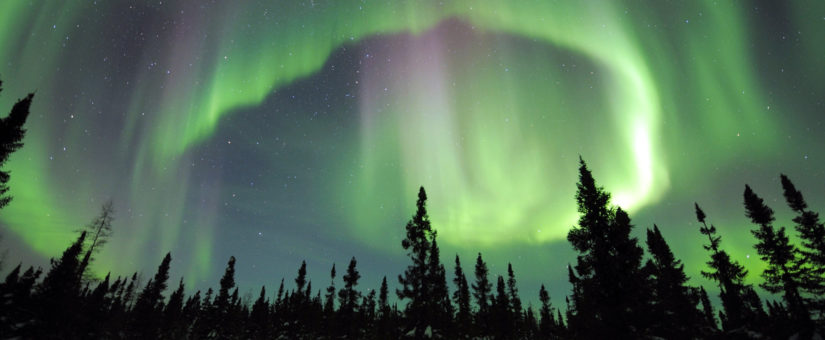
Origin of the Round Dance Ceremony
Guest post by Kay L. Carlson
Story of the Origin of the Round Dance as told by Cree Elder John Cuthand:
The story goes there was a woman who loved her mother very much. The daughter never married and refused to leave her mother’s side. Many years later, the mother, now very old, passed away. The daughter’s grief was unending.
One day as daughter was walking alone on the prairie, her thoughts filled with pain. As she walked, she saw a figure standing alone upon a hill. She came closer and saw that it was her mother. As she ran toward her mother, she could see her mother’s feet did not touch the ground. Her mother spoke, telling her she could not touch her.
“I cannot find peace in the other world so long as you grieve,” she said, “I bring something from the other world to help the people grieve in a good way.” She taught her daughter ceremony and the songs that went with it. “Tell the people that when this circle is made, we the ancestors will be dancing with you and we will be as one.” The daughter returned and taught the people the Round Dance ceremony.
 There is a Cree belief that the northern lights are also spirits of the ancestors dancing in the Green Grass world. It is regarded as a good sign if the northern lights dance as the people dance. The Round Dance ceremony ends when the circle is broken on the last song and the people weave in and out as they dance. This is to honor the northern lights and announce the ceremony is ending.
There is a Cree belief that the northern lights are also spirits of the ancestors dancing in the Green Grass world. It is regarded as a good sign if the northern lights dance as the people dance. The Round Dance ceremony ends when the circle is broken on the last song and the people weave in and out as they dance. This is to honor the northern lights and announce the ceremony is ending.
Round Dances traditionally took place in long lodges called nanapawnikamovikamik, meaning “night singing tipi,” as part of small tribal camp gatherings. The ceremony was also sometimes called Braid Bundle Dance because the braids of deceased relatives, kept in sacred bundles, were central to the meaning of the Round Dance ceremony.
 The nonprofit organization, Women Against Violence Against Women, held its third annual Round Dance to honor the spirits of the more than 1,000 Aboriginal women who have been murdered and gone missing in Canada. Men from the Cree Nation traveled to Vancouver from Saskatchewan and Alberta to lead the ceremony. Their songs and drumming allowed the community to grieve and honor our murdered and stolen sisters. These women had been daughters, leaving grieving parents. Many of them had been mothers, leaving grieving children. The original story seemed brought to life.
The nonprofit organization, Women Against Violence Against Women, held its third annual Round Dance to honor the spirits of the more than 1,000 Aboriginal women who have been murdered and gone missing in Canada. Men from the Cree Nation traveled to Vancouver from Saskatchewan and Alberta to lead the ceremony. Their songs and drumming allowed the community to grieve and honor our murdered and stolen sisters. These women had been daughters, leaving grieving parents. Many of them had been mothers, leaving grieving children. The original story seemed brought to life.
The ceremony took place on traditional land of the Tsleil-Waututh Nation, “The People of the Inlet.” First Nation people who have inhabited the lands and waters of the Burrard Inlet in British Columbia since time immemorial. Families, some with infants and small children, representing dozens of First Nations had traveled from all regions of British Columbia, Saskatchewan, Alberta, and even the United States to participate in
the Round Dance Ceremony that WAVAW youth volunteers helped to organize.
 Thirty women who have worked tirelessly to end violence against women were honored by being presented with blankets that were wrapped around their shoulders, demonstrating the community’s recognition and gratitude for the important contribution these women have made for women throughout Canada.
Thirty women who have worked tirelessly to end violence against women were honored by being presented with blankets that were wrapped around their shoulders, demonstrating the community’s recognition and gratitude for the important contribution these women have made for women throughout Canada.
As we held hands and danced in a large circle around the singers, our hearts did not constrict with grief, instead our hearts opened with love. The ceremony also honored the Divine Feminine which is ignored by most cultures, bringing about the imbalance that leads to acceptance of abuse and violence against women throughout the world. Recognizing and accepting the importance of the traditional feminine attribute of nurturing will help to heal today’s dysfunctional societies. Nurturing creates healthy individuals who then understand how to nurture healthy families, and ultimately healthy communities. This power of nurturing was honored as we danced and listened to the songs that reminded us of the importance of love. We felt the spirits of our stolen sisters joining us in the dancing, bestowing their love on everyone. And we were as
one.
- On April 13, 2015

